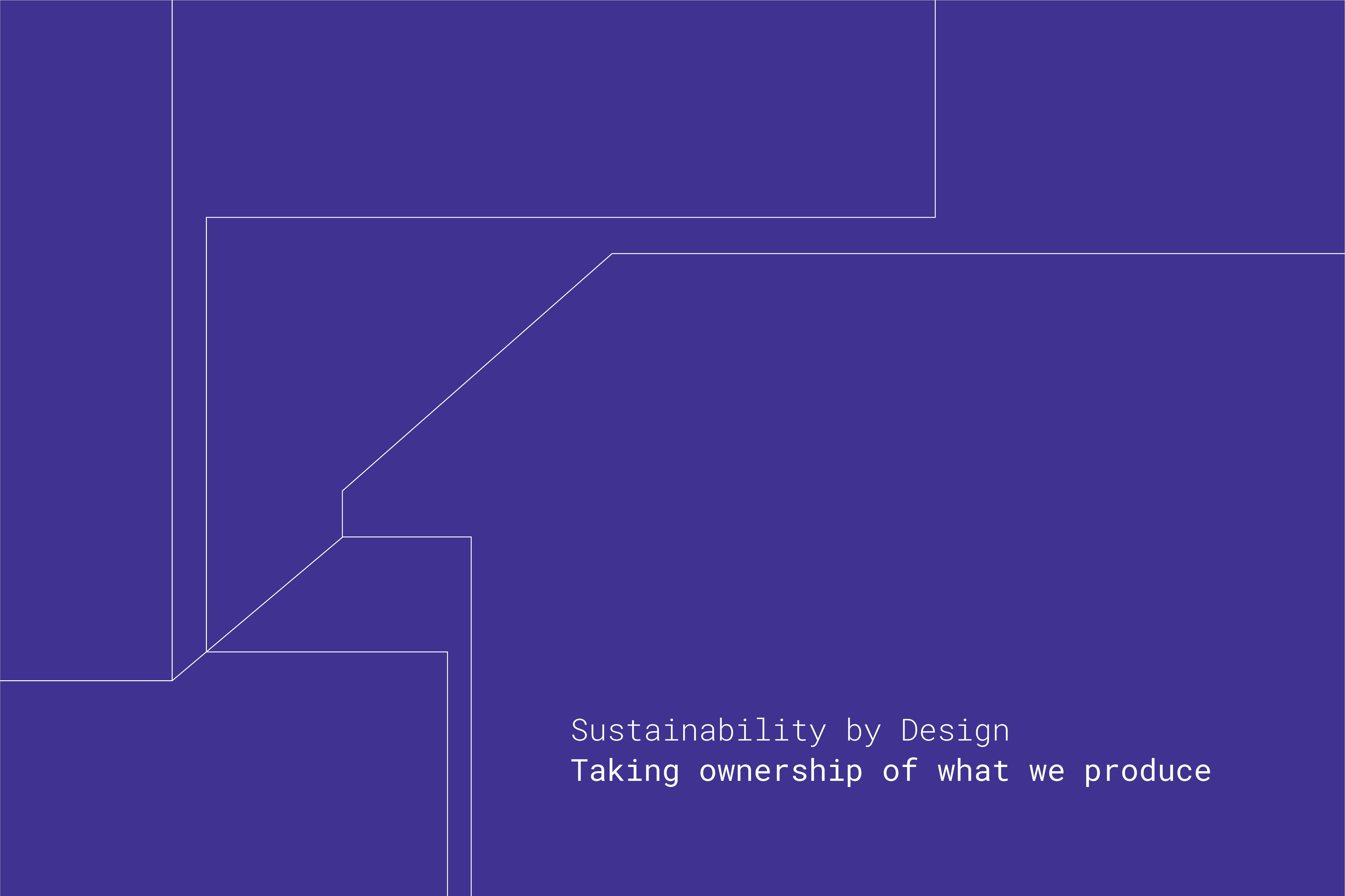For the longest time, we've treated graphic design like a craft; we work with materials and resources, create something, and hand it over to be used and distributed. But it's now time to hold ourselves accountable for what it is we create, how we create it, and what becomes of it when it leaves our hands.
George Aye, co-founder of Greater Good Studio argues, “We have a craft-based framework for good design, but we lack an ethically-based framework for good design.”
Our responsibility as designers is to be sustainable
The craft of a designer, especially in graphic design and advertising, is to work with assets and parameters that have been created by others and hand over our work to others, meaning that we are usually part of a chain of stakeholders that leads to end products. This is what makes it so easy for us and the other parts of that chain to assume the responsibility for the final outcome lies with someone else.
But it is the designer who's responsible for assessing and reducing the environmental and ethical impact of what we produce. Because no one else will. And because we should be aware of the impact our work has. Unless you work for a B Corp Certified company, or one with an environmental policy that actually means something, it’s likely no one will assign this responsibility to you. Which is why we need to assign it to ourselves, and potentially initiate a Corporate Social / Environmental / Digital Responsibility Policy for the companies we work for. One that educates our clients and the people we work with about our goals and values.
But we've not been trained to take ownership
The products we design aren’t always tangible: they consist of print and digital materials. But it is our job to understand the whole supply chain involved in the production and distribution of these products, including raw materials such as inks and papers. We also need to consider the energy used to host the files we designed, as well as processes like print and recycling processes and the environmental cost of cloud hosting.
This is difficult, when most of the information available about sustainable graphic or web design is created by individuals from the UK or Europe, the United States or Australia, all with different access to resources and specialised suppliers. While we can learn from pioneers from abroad, we certainly need to set our own standards on this island. There’s no point shipping “sustainable” resources from abroad to here, as the very process would render the end product unsustainable. Likewise, we need to host our digital assets locally and efficiently.
Ethical frameworks can ensure we clarify and communicate how we want to work, who we want to work with, and what we’re striving towards. But most importantly, they are a means of taking ownership of our responsibilities.
Cross-sectoral collaboration is essential
Creating frameworks is not enough, by itself. To fulfil our responsibilities, we need to learn who the other participants in the production chain of our products are. We need to engage with them, their trade, and their knowledge. We need to find people in those fields who work with best practices and try to reduce their environmental impact. Because we can only achieve truly sustainable design through cross sectoral collaboration and exchange. By learning from other industries, dipping into other territories, inviting ourselves in beyond our comfort zones, and starting to talk about it.
Designers from other fields (fashion, product, industrial, etc.) already have a history of supply chain analyses and environmental practices and policies. We can learn from them to create policies and frameworks and adapt them for our own needs. Web design and the ICT sector are heading in this direction (see Kevin Horan’s recent article, jampacked with resources).
Once I realised that the lack of communication between industries is what hinders environmental progress the most, I started hijacking other industries. I pestered a low-cost print shop to hire me, so I could learn what the issues are from a print perspective. I studied Environmental Sciences and interned at a Paper Research Institute, to get a glimpse of where the paper industry is coming from. Short lived employments in the ICT and IT areas brought me insights into web standards and infrastructure needs and customs. I started joining events online that were intended for - well, not me.
The pandemic has opened up the doors to a lot of conferences and talks virtually, and the insights I gained from attending some of these events are invaluable for understanding the real cost and lifecycle of print and digital products. I learned, for example, through an event on sustainable ICT, that there are data centres in Europe that use refurbished infrastructure components, instead of prophylactically replacing all components in frequent intervals as is still common practice. This allowed me to ask better questions when choosing a hosting provider in Ireland, and to demonstrate that there is consumer demand for sustainable ICT in Ireland.
The most important part, however, is communication and making of connections. So, if you go and hijack an event, make sure to introduce yourself and your intentions, you may just meet someone likeminded who understands the importance of inter-sectoral collaboration. If we can all make an effort to connect more with people in related industries, and be open to their concerns and intentions, we may just be able to create better products; products whose impact we have assessed for true economical, environmental and ethical sustainability.
About the writer
Lisa Zimmermann is a Lecturer in Visual Communications at MTU Cork. She researches best practices in sustainability in graphic and web design.
